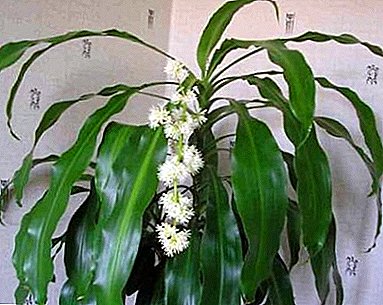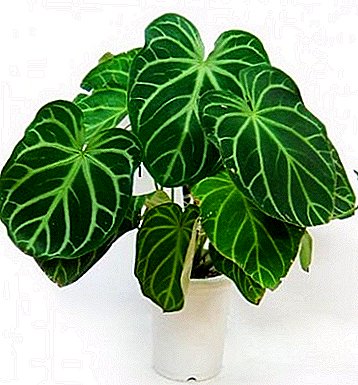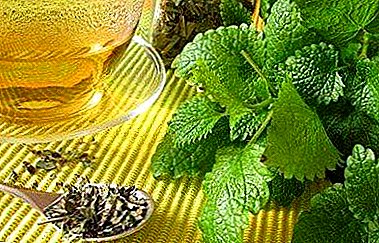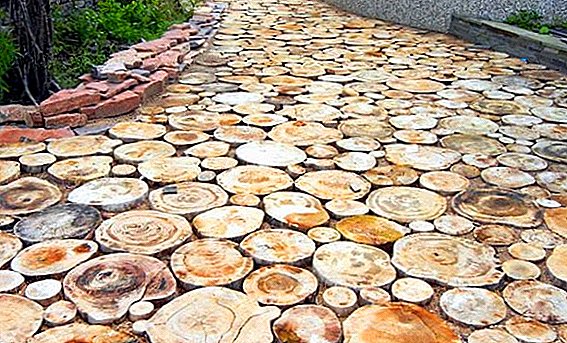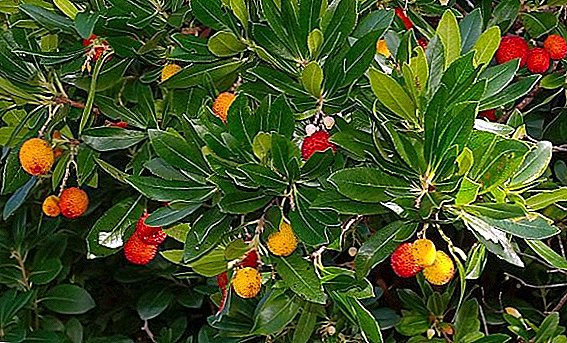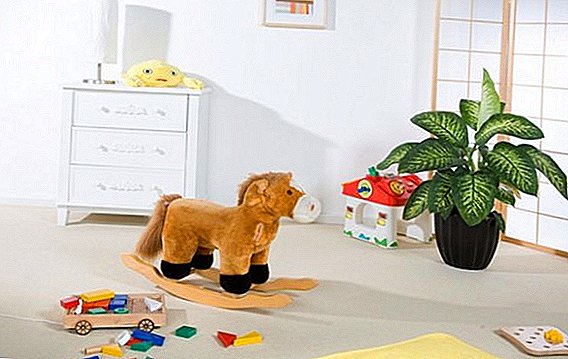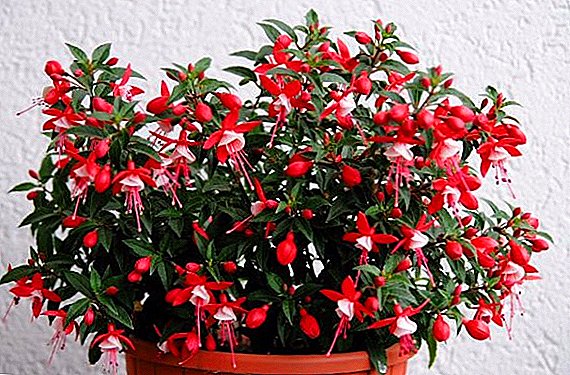 Fuchsia is a perennial plant growing in nature in Central and South America and New Zealand. Indoor fuchsia is a hybrid plant, has many varieties and forms. It has been cultivated in culture for more than 200 years, and flower growers call it "Japanese lantern" or "ballerina".
Fuchsia is a perennial plant growing in nature in Central and South America and New Zealand. Indoor fuchsia is a hybrid plant, has many varieties and forms. It has been cultivated in culture for more than 200 years, and flower growers call it "Japanese lantern" or "ballerina".
Under natural conditions, fuchsia has the appearance of a bush with flexible branches. The leaves of the plant are green or reddish, have an oval, slightly pointed shape with notches on the edges. The flowers consist of a calyx and a tubular corolla with curved edges. The plant blooms continuously and abundantly drooping flowers. The stamens are longer than the calyx, the lobes of the calyx are longer than the petals. Fuchsia flowers appear on long pedicels, and their color is white, pink, orange, red, cream, lilac and purple.
Fuchsia in the house does not require complex care, but the florist needs to know some of the nuances in this regard. There are recommendations on the choice of seedlings, the care of the plant during dormancy and flowering, transplanting and pruning.
Did you know? Fuchsia breeding lasts more than 200 years. During this period, approximately 15,000 varieties and hybrids of this plant were bred.
How to choose the fuchsia seedlings in the store
In stores, fuchsia is sold singly or 3-4 cuttings. It depends on the size of the pot in which the plant is grown. Choosing a seedling, you need to pay attention to such moments:
 Whether the plant is properly formed, how the pinching was performed;
Whether the plant is properly formed, how the pinching was performed;- Whether the plant is in favorable conditions;
- Does it look healthy - dark green and large leaves, dense beautiful bushes;
- The roots should not be visible from the bottom hole of the pot.
It is bad if the seedlings in the store are in a dark place and do not water well. The buds of such plants may fall off, and the leaves turn yellow.
When buying fuchsia seedlings, it is important to make sure that there are no pests in them. For this you need to inspect the underside of the leaves, and if there are no spots and points, then everything is in order. Also, after a shake-up of a plant, the whitefly should not fly out of it, it is very difficult to get rid of them.
Fuchsia care at home
Care for fuchsia at home is easy. There are some secrets of fuchsia care, and they are all simple.
 Fuchsia loves cool rooms, in summer the temperature should not exceed 20 degrees. For her suitable northern or eastern sill. In summer, the plant must be saved from stuffiness; if possible, he needs to provide a place on the balcony or in the courtyard, where only in the morning the sun's rays will fall. The rest of the day fuchsias better to be in partial shade. If there are no options for placing a plant in the house in the light with diffused sunshine, fuchsia also feels good under artificial light.
Fuchsia loves cool rooms, in summer the temperature should not exceed 20 degrees. For her suitable northern or eastern sill. In summer, the plant must be saved from stuffiness; if possible, he needs to provide a place on the balcony or in the courtyard, where only in the morning the sun's rays will fall. The rest of the day fuchsias better to be in partial shade. If there are no options for placing a plant in the house in the light with diffused sunshine, fuchsia also feels good under artificial light.
Watering the plant should be regular, which is especially important during growth and flowering. Water must be filtered or defended. Spraying water in the summer is also very helpful, it refreshes the plant. Air humidification can also be achieved by placing a plant pot in a pan with water.
Important! If the leaves of the plant are drained, it must not only be watered, but also sprayed with water. After these procedures, fuchsia is covered with non-woven material - this is done to restore the elasticity of the leaves.
From spring to autumn, the period of active growth, reproduction and flowering of the plant lasts. It is necessary to take care of how to feed the fuchsia in the spring, as this will play a huge role in the active period of the life of the plant. During flowering for the flower preferred fertilizers containing a lot of potassium and phosphorus.
With proper care, indoor fuchsia will delight its owner for many years with its delicate flowers.
Features care during the flowering period
When fuchsia blooms, there are some special recommendations for caring for it. During the flowering period, watering should be sufficient and regular. Stagnant moisture in the roots is unacceptable, but it is necessary to water the plant after the topsoil has dried out.
 Fuchsia is sensitive to change, so especially during the flowering period you can not make a permutation and rotate the plant. Such actions are fraught with falling flowers and buds.
Fuchsia is sensitive to change, so especially during the flowering period you can not make a permutation and rotate the plant. Such actions are fraught with falling flowers and buds.
Many plants can not be transplanted during flowering, this rule applies to fuchsia. As for feeding, for example, Kemira Lux fertilizer contains nitrogen, potassium, phosphorus, iron, zinc, manganese, boron, copper, molybdenum. It is very well suited for feeding fuchsia. From the moment the buds appear, you can water the fuchsia with liquid fertilizer for flowering plants once a week.
Did you know? If flowering weakens, and new leaves become small, this indicates the need to feed the plant.
Transplantation and pruning fuchsia
 Transplant fuchsia as needed. It occurs after the purchase of a plant, and also as the pot becomes small. The soil for fuchsia consists of sod and leaf earth, sand, peat and humus, which are taken in equal parts. You can use ready-made soil for plants. It is very important to lay the drainage on the bottom of the pot.
Transplant fuchsia as needed. It occurs after the purchase of a plant, and also as the pot becomes small. The soil for fuchsia consists of sod and leaf earth, sand, peat and humus, which are taken in equal parts. You can use ready-made soil for plants. It is very important to lay the drainage on the bottom of the pot.
As a drainage, the usual expanded clay may be used, on top of which the soil is laid. A plant in a new pot is placed with a lump of earth in which it grew. The remaining voids are filled with soil mixture.
After transplanting fuchsia put on the light, cut the length of the stems by one third, watered and well sprayed. If the procedure was carried out correctly, the plant will release many flowers.
Pruning and the formation of fuchsia begins when the plant is still a stalk. This plant is very plastic, and therefore it can be given any shape - bush, ampelous, pyramidal, shtambovy tree.
 Newly owned owners of fuchsia often have a question when to cut the fuchsia. It is recommended to cut the fuchsia twice a year: in early October, when the growing season is over, and in early January. During the first pruning, all faded stems are removed. Cut costs 2 cm above the sleeping buds. The second pruning is intended for the final formation of the crown.
Newly owned owners of fuchsia often have a question when to cut the fuchsia. It is recommended to cut the fuchsia twice a year: in early October, when the growing season is over, and in early January. During the first pruning, all faded stems are removed. Cut costs 2 cm above the sleeping buds. The second pruning is intended for the final formation of the crown.
When a plant only enters the house, it needs to adapt. Flower growers often wonder when and how to pinch a fuchsia after purchase in order to shape it properly. After adaptation and rooting, the plant releases new leaves. At this point, you need to pinch the top of the plant. To make the plant more flowering and leafy, new shoots also pinch.
Important! It is very important to form the fuchsia of ampel varieties correctly. They can form long shoots, if not pinch them in time. Such shoots bloom only at the ends. If they are shortened, new flowers will appear no sooner than in 3-4 weeks.
Optimum conditions for wintering plants
In different seasons, fuchsia experiences different stages of its life and development. In addition to periods of active growth and flowering, you need to know what to do with fuchsia in the fall and winter.
If during periods of active growth and flowering soil moistening is necessary quite often, in the fall the frequency of irrigation is reduced, and in winter it is watered 1-2 times a month.
In winter, the air temperature in a fuchsia room should be up to 15 ° C. The plant will be comfortable at 8-10 degrees. Wintering fuchsia in the apartment is possible on the balcony or loggia, but you should make sure that the temperature there is not too low. By the way, in winter you should not fertilize fuchsia.
During wintering it is important that the plant is properly rested. Having restored strength, in the new season the fuchsia will give abundant flowering, which will last for a long time. In order to build up the strength of a plant, it is necessary to prune it before winter rest and remove all pests.
Two breeding methods
Fuchsia can be propagated in two ways - by seeds and grafting.
 Reproduction by seeds. Seed propagation interests mainly breeders. This is due to the fact that fuchsia grown from seed does not retain the characteristics of the original plant (it rarely stores).
Reproduction by seeds. Seed propagation interests mainly breeders. This is due to the fact that fuchsia grown from seed does not retain the characteristics of the original plant (it rarely stores).
When propagating by seeds, it is necessary to exclude self-pollination of a plant and its pollination by insects. To do this, remove the anthers from the unblown flower, apply the pollen of the father plant on the stigma of the pistil. Then a cloth or paper case is put on the flower, fastening it with threads below the flower, which isolates it from insects.
After ripening, the fruit is cut to remove seeds, which need to be dried in the future.
Fuchsia seeds are sown on a wet substrate without embedding. Greenhouse conditions are created for the container with good illumination and compliance with room temperature. In a few weeks, shoots should appear. After a couple of months, the sprouts dive, and after another couple of months they are planted in separate pots.
To the external environment, seedlings need to be taught gradually, because without adaptation to non-thermal conditions, they can wither and die.
 Reproduction by cuttings. A more reliable way of breeding fuchsia - cuttings. It can be used at any time of the year, but spring is a favorable period. Young cuttings are taken 10-20 cm long. The leaves in the lower part are removed, and the rest is shortened by half.
Reproduction by cuttings. A more reliable way of breeding fuchsia - cuttings. It can be used at any time of the year, but spring is a favorable period. Young cuttings are taken 10-20 cm long. The leaves in the lower part are removed, and the rest is shortened by half.
For rooting, the stalk is placed in filtered water and covered with a plastic bag or bottle. At about 4–10 days, the roots appear. No need to wait until they are very elongated, they can be immediately planted in the substrate.
Important! It is necessary to take young cuttings, since adults are thicker, and the period of their rooting is much longer.
Fuchsia Diseases and Pests
Fuchsias are not susceptible to diseases and attacks of pests. Most often problems arise in cases of improper care and watering.
Fuchsia diseases and pests:
- There are yellow stripes or brown spots on the leaves in winter - too abundant watering. Fight: make watering moderate;
- Yellowness appears between the veins of the leaves - manganese is missing. Fight: feed the plant with fertilizer containing the necessary element;
- Dew drops appear on the leaves with white powdery spots - a consequence of too high humidity. Fight: spraying with a base solution;
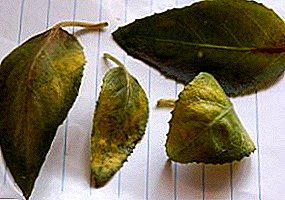 Yellow leaves - not enough magnesium and nitrogen. Fight: fertilize the plant with nutrients containing the required elements;
Yellow leaves - not enough magnesium and nitrogen. Fight: fertilize the plant with nutrients containing the required elements;- Falling leaves - insufficient watering, little light, dry air. Struggle: provide comfortable conditions for the plant;
- Buds fall - the irrigation regime fails, the flower is disturbed during the flowering period. Fight: do not rearrange the pot during flowering, normalize watering;
- Short flowering - insufficient feeding, light or too hot and insufficient watering. Struggle: determine which of the above is more like a reason in a particular case and correct the situation;
- Brown circles appear on the lower part of the leaves - a disease of rust. Fight: remove diseased leaves, treat the plant with Topaz, disinfect the tools that come into contact with the plant;
- The appearance of white flies - the larvae of flies suck up the sap of the plant. Fight: wash the leaves with soapy water, treat fuchsia with a special preparation.
Important! If fuchsia does not bloom, the reason for this may be a lack of light, nutrients, too high a temperature in the room, abundant watering.
Tips flower growers
- In the summer heat is to be afraid of overheating of the roots of the plant. The solution to this problem is to grow a flower in a thick-walled ceramic pot.
- Fuchsia is very sensitive to permutations, its location should be permanent. If a fuchsia doesn't like something, it can shed its leaves.
- When fuchsia is not enough light, it can stretch in height, but it will not bloom. Noticing such a state of the plant, it is necessary to correct the situation by providing the necessary amount of light.
- Overfeeding fuchsia with fertilizer is not worth it, because as a result of this it will produce lush foliage and, possibly, only a couple of flowers.
- If the plant was depressed for some time by bad weather or lacked nutrition and water, it can be well encouraged by spraying with growth stimulants.


 Whether the plant is properly formed, how the pinching was performed;
Whether the plant is properly formed, how the pinching was performed; Yellow leaves - not enough magnesium and nitrogen. Fight: fertilize the plant with nutrients containing the required elements;
Yellow leaves - not enough magnesium and nitrogen. Fight: fertilize the plant with nutrients containing the required elements;
